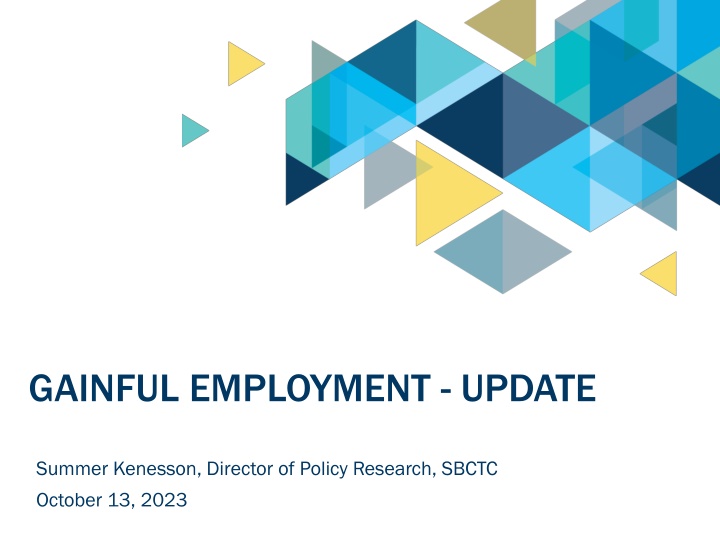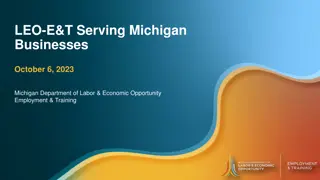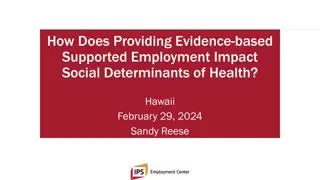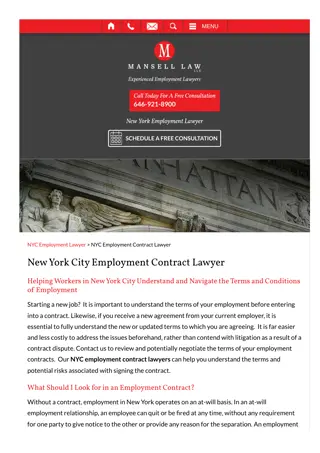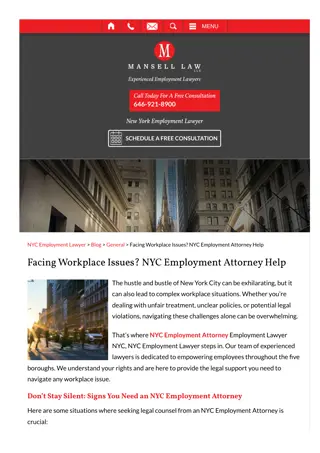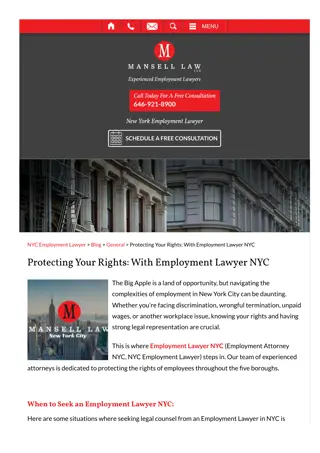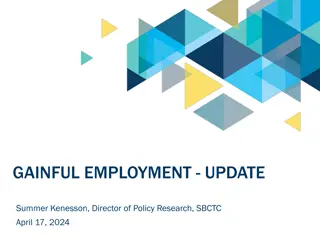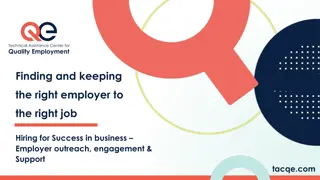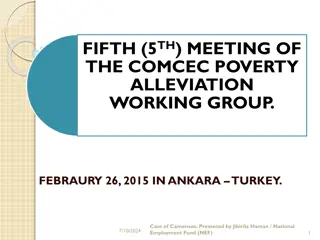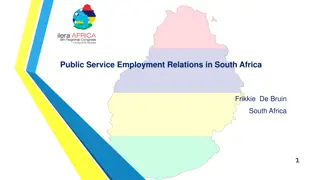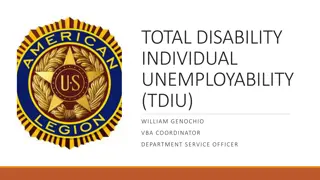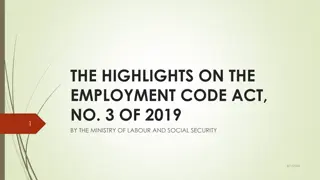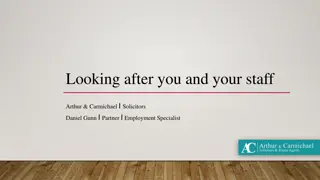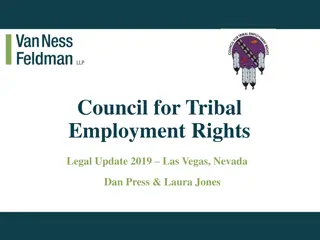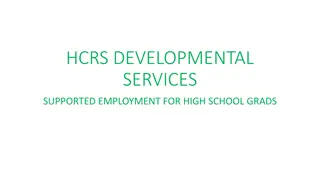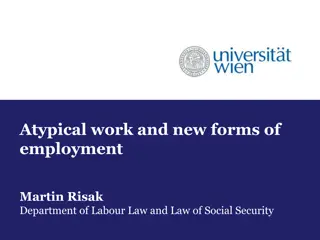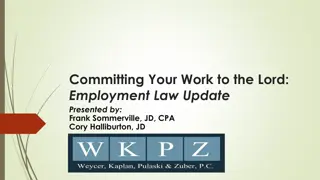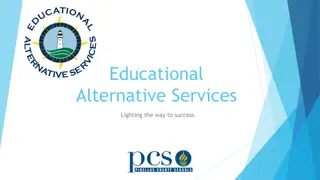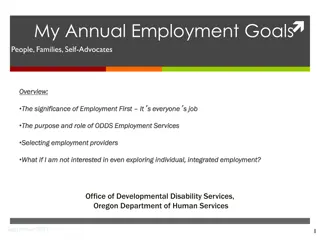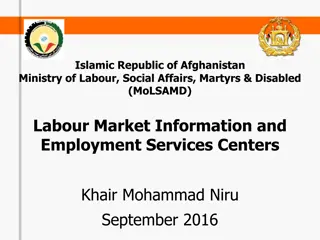GAINFUL EMPLOYMENT - UPDATE
Gainful Employment Rule was intended to ensure graduates' earning potential aligns with student loan debt for vocational programs. Challenges faced by WA CTC System included confusion on program inclusion, data collection issues, and clarity on data publication requirements. Despite no program failures, the rule struggled to be a meaningful tool and was eventually rescinded. Efforts are underway for a potential return of the rule through federal legislation.
Download Presentation

Please find below an Image/Link to download the presentation.
The content on the website is provided AS IS for your information and personal use only. It may not be sold, licensed, or shared on other websites without obtaining consent from the author.If you encounter any issues during the download, it is possible that the publisher has removed the file from their server.
You are allowed to download the files provided on this website for personal or commercial use, subject to the condition that they are used lawfully. All files are the property of their respective owners.
The content on the website is provided AS IS for your information and personal use only. It may not be sold, licensed, or shared on other websites without obtaining consent from the author.
E N D
Presentation Transcript
GAINFUL EMPLOYMENT - UPDATE Summer Kenesson, Director of Policy Research, SBCTC October 13, 2023
BACKGROUND OF THE GAINFUL EMPLOYMENT RULE Department of Education regulation established in 2011, but not implemented until 2014 due to legal challenges Intended to ensure that graduates of professional-technical certificate programs and private college vocational programs had reasonable potential to earn wages sufficient to repay student loan debt Utilized a formula to relate tuition costs and loan debt to employment outcomes with acceptable debt to earnings ratio thresholds Individual colleges were responsible for collecting and publishing the data Programs that did not reach the thresholds were give a probationary period to improve outcomes or would risk losing eligibility for federal financial aid 2
BACKGROUND OF THE GAINFUL EMPLOYMENT RULE For the WA CTC system, the challenges of implementing the 2014 GE rule included: Confusion on what programs were included (called eligible ) Workload colleges had to provide 7 years of student record level data from multiple sources and in incompatible formats Navigating data sources for consistency and for programs lacking significant amounts of employment outcome data Lack of clarity on requirements to publish GE program data, especially with regard to FERPA and personally identifiable information (PII) Tight timeline made system-level coordination very challenging, as well as colleges capacity to manage the data processing In some cases, colleges struggled with support for resources and coordination across data providers 3
OUTCOMES FROM THE 2014 RULE In Washington, for our system: No colleges had a program fail to meet the thresholds, but some were close Had a program been put in probationary status, there was little scope on what options colleges would have for improvements GE struggled to gain significant ground as a meaningful tool for colleges or students The rule was rescinded in 2019 4
RETURN OF THE GAINFUL EMPLOYMENT RULE The rule has been moving through federal legislation for a return, with consultation and recognition of challenges from the previous iteration Expected to be implemented July 1, 2024 Legal challenges are again underway from private sector vocational colleges 5
GE 2.0 Information is published in the Federal Register :: Financial Value Transparency and Gainful Employment Current proposal cites certificate programs and graduate degree programs at public institutions as eligible GE programs but all Title IV-eligible programs will be required to report data Stackable credentials are counted as the highest credential a student earns student earns Embedded certificates will be included if students enroll separately from the degree as the highest credential a 6
GE 2.0 PROPOSED METRICS Subpart Q ( Financial Value Transparency Framework ) Applies to all Title IV programs all Title IV programs Measure of earnings of graduates compared to typical high school graduates Measure of debt burden for typical graduates Performance benchmarks for each measure Data will be published via a program information website maintained by the DoE Prospective students for eligible GE programs with poor outcomes under the debt-burden measures will be required to confirm viewing this data before enrollment 7
GE 2.0 PROPOSED METRICS Subpart S ( Accountability Framework Applies the general metrics to eligible GE programs and applies a threshold for earnings premium (compared to high school graduates) and debt burden Programs that fail the same measure in any 2 of 3 consecutive years will lose Title IV eligibility Programs that will fail must notify currently enrolled and prospective students, and students must acknowledge the warning via DoE s website before FA disbursement 8
SUBPART Q FINANCIAL VALUE TRANSPARENCY Metrics are published in 668.401 onward The DoE will calculate two debt to earnings rates: discretionary (includes a Poverty Guideline measure and an annual loan payment) and annual (loan payment/median annual earnings) Eligible programs will fail under debt to earnings if Its discretionary debt-to-earnings rate is greater than 20 percent and and Its annual debt-to-earnings rate is greater than 8 percent The DoE will calculate the earnings premium measure using a federal agency with earnings data to report media annual earnings for a program cohort Programs will fail under earnings premium if the median annual earnings of the students who completed the program are equal to or less than the earnings threshold. 9
SIMILARITIES AND DIFFERENCES IN 2024 DoE is procuring more of the data and completing more of the calculations Student acknowledgements required for failing programs Program reporting more programs, programs with same 4 digit CIP, program descriptions, all enrollments regardless of aid Student reporting few changes 10
REPORTING BURDEN By July 31: 6 years of historical program and student data (annual additions due October 1 for 2025 onward) By December 1 Statement of certification for eligible GE programs (mainly accreditation) Beginning July 1, 2026 Issue a warning to students enrolled or enrolling in any program that could become ineligible (detailed requirements) 11
SBCTC SUPPORT IN 23-24 Planned support includes: Informing commissions and councils of the new rule, changes, and updates Work group with research and planning committee to prepare for the reporting burden, considering potential of centralized reporting Testing programs with the new metrics to identify potential at-risk programs Providing a point of contact with the DoE Developing communication templates We welcome input and suggestions on what would be helpful; to skenesson@sbctc.edu 12
QUESTIONS Contact: Summer Kenesson, Director of Policy Research SBCTC skenesson@sbctc.edu CC BY 4.0, except where otherwise noted.
